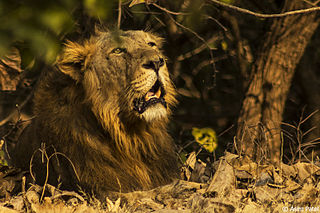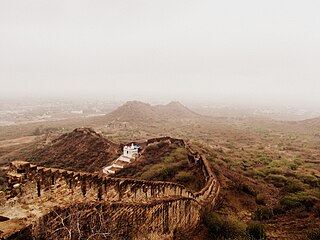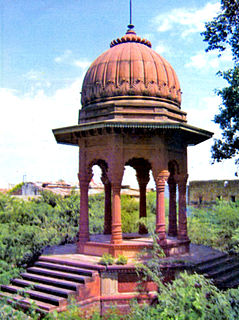
Naga Panchami is a day of traditional worship of Nagas or snakes observed by Hindus throughout India, Nepal, and other countries where Hindu adherents live. The worship is offered on the fifth day of bright half of lunar month of Shravana (July/August), according to the Hindu calendar. Some Indian states, such as Gujarat, celebrate Naga Panchami on the dark half of the same month. As part of the festivities, a Naga or serpent deity made of silver, stone, wood, or a painting of snakes is given a reverential bath with milk and their blessings are sought for the welfare of the family. Live snakes, especially cobras, are also worshipped on this day especially with offerings of milk and generally with the assistance of a snake charmer.
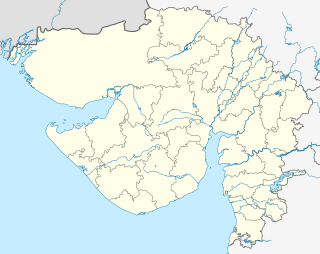
Kukma or Kookma is a village near the Bhuj town, taluka in Kachchh District of Indian State of Gujarat. It is located at a distance of 16 kilometers from Bhuj, the headquarters of Kachchh District.

Devaria or Devaliya or Deoria is a village in Anjar Taluka of Kutch at a distance of about 3 km from Anjar town of Kachchh District of Gujarat in India.

Nagor or Nagher is a village in Bhuj Taluka of Kutch at a distance of about 8 km from Bhuj town, the capital of Kachchh District of Gujarat in India.
Hajapar is a village in Bhuj Taluka of Kachchh District of Gujarat State of India. It is located at a distance of about 18 km from Bhuj. One nearby village is Reha. As per some old records & books of Mistris community Hajapar was also known as Rajapar in olden days.

Koteshwar is a small village and the location of an ancient Shiva temple. It located near the mouth of Kori Creek, in the west of Kutch district of Gujarat, India.

Narayan Sarovar or Narayansar is a village and place of pilgrimage for Hindus on the Kori Creek. It is located in Lakhpat taluka of Kutch district, Gujarat, India. The ancient Koteshwar temple lies only 4 km away.

Naliya is a town, which is also the taluka headquarters of Abdasa Taluka of Kutch District, Gujarat, India. It is located on the western end of Kutch 19 km by road from ancient port of Jakhau.

Tera is a historic village in the Kutch District of the Indian state of Gujarat. It is in Abdasa Taluka, located 13 kilometres (8.1 mi) from the taluka headquarters, Naliya, and 84 kilometres (52 mi) from the district headquarters, Bhuj.
Tera Fort is one of the many forts of Kutch, Gujarat, India. It is situated in southwestern Kutch near the village of Tera in Abdasa Taluka.
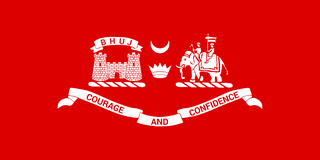
Cutch, also spelled Kutch or Kachchh, was a relatively large Indian princely state during the British Raj. Its territories covered the present day Kutch region of Gujarat north of the Gulf of Kutch. Bordered by Sindh in the north, Cutch State was one of the few princely states with a coastline.

Jakh Botera, Jakhdada, Jakkha Bautera, 72 Yaksha or Bohter Yaksha, literally seventy-two Yaksha warriors, are group of folk deities worshiped widely in Kutch district of Gujarat, India.
Captain James MacMurdo was the first political resident of British East India Company to Cutch State. He played important role in bringing Cutch under British suzerainty.

The history of Kutch, a region in the extreme west of the western Indian state of Gujarat, can be traced back to prehistorical times. There are several sites related to Indus valley civilization in region and is mentioned in Hindu mythology. In historical times, Kutch is mentioned in Greek writings during Alexander. It was ruled by Menander I of Greco-Bactrian Kingdom which was overthrown by Indo-Scythians followed by Maurya Empire and Sakas. in the first century, it was under Western Satraps followed by Gupta Empire. By fifth century, Maitraka of Valabhi took over from which its close association with ruling clans of Gujarat started. Chavdas ruled the eastern and central parts by seventh century but were came under Chaulukyas by tenth century. After fall of Chaulukya, Vaghelas ruled the state. Following conquest of Sindh by Muslim rulers, Rajput Samma started moving southwards to Kutch and ruled western regions initially. By tenth century, they controlled significant area of Kutch and by thirteenth century they controlled whole of Kutch and adopted a new dynastic identity, Jadeja.

The Shiva temple, Kera, also known as Lakheshwara temple of Kerakot, is located in Kera village near Bhuj of Kutch district in Gujarat. The temple was built during the reign of the Chaulukya dynasty (Solankis) in the later part of the 10th Century and is dedicated to Shiva. The temple has been subjected to severe earthquake damages during the earthquake of 1819 and the Bhuj earthquake of 2001. But the temple's spire, inner sanctum and the sculptures are still in an attractive condition.


